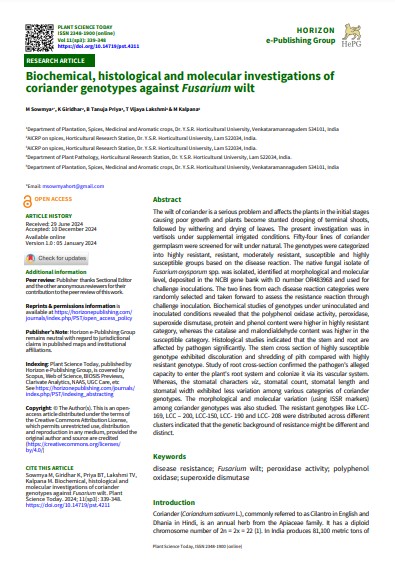A Narrative Review of Leech Therapy
DOI:
https://doi.org/10.55718/kja.341Keywords:
Leech Therapy , Jalaukavacharana, Raktamokshana, Hirudo medicinalis, Bioactive Compounds of leech saliva, Ayurvedic MedicineAbstract
Leech therapy, or Jalaukavacharana in Ayurveda, is an ancient therapeutic practice utilizing medicinal leeches (Hirudo medicinalis) to treat various ailments by drawing impure blood and promoting healing. This method, detailed in classical Ayurvedic texts like the Sushruta Samhita, has a long history of use for treating blood-related disorders (Raktaja) and inflammatory conditions. The therapeutic efficacy of leech therapy is attributed to the bioactive compounds secreted in leech saliva, such as hirudin (an anticoagulant), hyaluronidase (which enhances tissue permeability), and calin (a vasodilator). These compounds improve blood circulation, reduce inflammation, and facilitate wound healing. Contemporary applications of leech therapy have expanded beyond Ayurveda, finding utility in reconstructive plastic surgery, osteoarthritis, venous insufficiency, and chronic pain management. Compared to other bloodletting methods, leech therapy is minimally invasive, cost-effective, and environmentally sustainable, especially with advancements in leech cultivation. This review examines the clinical benefits, bioactive components, and potential for integrating leech therapy into modern healthcare systems. Additionally, it explores the environmental and economic advantages of leech farming and compares leech therapy with other traditional treatments like poultice therapy (upanaham). Despite its ancient roots, leech therapy continues to show promise as an alternative, integrative treatment in both traditional and modern medical practices.
References
Marquez-Gil KY, Mesa E, Kouka N, Fonarov I, Casadesus D. Medicinal Leeches to Aid in Post-procedural Hematoma Evacuation. Cureus. 2023 Aug;15(8):e43338.
Abdelgabar AM, Bhowmick BK. The return of the leech. Int J Clin Pract. 2003 Mar;57(2):103–5.
Hackenberger PN, Janis JE. A Comprehensive Review of Medicinal Leeches in Plastic and Reconstructive Surgery. Plast Reconstr Surg Glob Open. 2019 Dec;7(12):e2555.
Montinari MR, Minelli S. From ancient leech to direct thrombin inhibitors and beyond: New from old. Biomed Pharmacother. 2022 May;149:112878.
M N Vaidyar. Susrutha-Samhitha. 2nd ed. Vol. Sutrasthana. Ch. 13/9. Prabhus Books, Thiruvananthapuram; 2000. 129 p.
M N Vaidyar. Susrutha-Samhitha. 2nd ed. Vol. Sutrasthana. Ch. 13/10. Prabhus Books, Thiruvananthapuram; 2000. 129 p.
Sig AK, Guney M, Uskudar Guclu A, Ozmen E. Medicinal leech therapy-an overall perspective. Integr Med Res. 2017 Dec;6(4):337–43.
Vagbhata. Astangahrdayam. 1st ed. Vol. Sutrasthana. Ch. 26/42. varanasi: Chowkhamba Krishnadas Academy; 323 p.
M N Vaidyar. Susrutha-Samhitha. 2nd ed. Vol. Sutrasthana. Ch. 14/44. Prabhus Books, Thiruvananthapuram; 2000. 153 p.
M N Vaidyar. Susrutha-Samhitha. 2nd ed. Vol. Sutrasthana. Ch. 14/05. Prabhus Books, Thiruvananthapuram; 2000. 140 p.
M N Vaidyar. Susrutha-Samhitha. 2nd ed. Vol. Sutrasthana. Ch. 14/22. Prabhus Books, Thiruvananthapuram; 2000. 145 p.
M N Vaidyar. Susrutha-Samhitha. 2nd ed. Vol. Sutrasthana. Ch. 14/21. Prabhus Books, Thiruvananthapuram; 2000. 145 p.
Annapure VSV, Vaidya VGU, Mali VCV. CONCEPTUAL STUDY OF RAKTAMOKSHANA - A LITERATURE REVIEW.
Phillips AJ, Govedich FR, Moser WE. Leeches in the extreme: Morphological, physiological, and behavioral adaptations to inhospitable habitats. Int J Parasitol Parasites Wildl. 2020 Sep 19;12:318–25.
Koeppen D, Aurich M, Pasalar M, Rampp T. Medicinal leech therapy in venous congestion and various ulcer forms: Perspectives of Western, Persian and Indian medicine. J Tradit Complement Med. 2020 Mar;10(2):104–9.
Conley K, Jamal Z, Juergens AL. Leech Bite. In: StatPearls [Internet]. Treasure Island (FL): StatPearls Publishing; 2024 [cited 2024 Dec 12]. Available from: http://www.ncbi.nlm.nih.gov/books/NBK518971/
Iyer RG, Rogers DV, Levine M, Winchell CJ, Weisblat DA. Reproductive differences among species, and between individuals and cohorts, in the leech genus Helobdella (Lophotrochozoa; Annelida; Clitellata; Hirudinida; Glossiphoniidae), with implications for reproductive resource allocation in hermaphrodites. PLoS One. 2019 Apr 1;14(4):e0214581.
M N Vaidyar. Susrutha-Samhitha. 2nd ed. Vol. Sutrasthana. Ch. 13/11-12. Prabhus Books, Thiruvananthapuram; 2000. 129–131 p.
Liu SJ, Cao YL, Zhang C. Hirudin in the Treatment of Chronic Kidney Disease. Molecules. 2024 Feb 27;29(5):1029.
Rai PK, Singh AK, Singh OP, Rai NP, Dwivedi AK. Efficacy of leech therapy in the management of osteoarthritis (Sandhivata). Ayu. 2011 Apr;32(2):213–7.
Freeman M, Carney M, Matatov T, Vemula R, Babycos C. Leech (Hirudo medicinalis) Therapy for the Treatment of Nipple-Areolar Complex Congestion Following Breast Reduction. Eplasty. 2015;15:ic45.
M N Vaidyar. Susrutha-Samhitha. 2nd ed. Vol. Sutrasthana. Ch. 13/3. Prabhus Books, Thiruvananthapuram; 2000. 127 p.
Vagbhata. Astangahrdayam. 1st ed. Vol. Sutrasthana. Ch. 26/42(1). varanasi: Chowkhamba Krishnadas Academy; 323 p.
Kumar T, Sanapeti RV, Prasad BS. Evaluation of effect of poultice (Upanaha Sweda) in low back pain (Katigraha): A randomized comparative clinical trial. Ayu. 2019;40(3):159–63.
Davoodi F, Taheri S, Raisi A, Rajabzadeh A, Zakian A, Hablolvarid MH, et al. Leech therapy (Hirudo medicinalis) attenuates testicular damages induced by testicular ischemia/reperfusion in an animal model. BMC Vet Res. 2021 Jul 27;17(1):256.
Alaama M, Kucuk O, Bilir B, Merzouk A, Ghawi AM, Yerer MB, et al. Development of Leech extract as a therapeutic agent: A chronological review. Pharmacological Research - Modern Chinese Medicine. 2024 Mar 1;10:100355.





